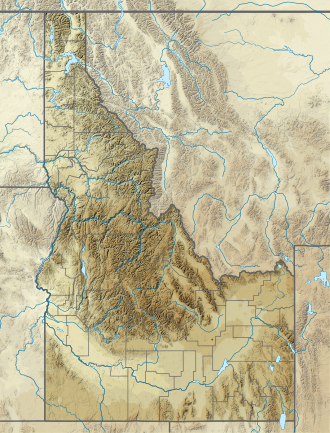| Three Island Crossing State Park | |
|---|---|
 | |
| Location | Glenns Ferry, Idaho, United States |
| Coordinates | 42°56′41″N115°19′05″W / 42.9447°N 115.318°W [1] |
| Area | 613 acres (248 ha) [1] |
| Elevation | 2,484 ft (757 m) [1] |
| Established | 1968 [2] |
| Administered by | Idaho Department of Parks and Recreation |
| Website | Official website |
Three Island Crossing State Park is a history-focused public recreation area in Glenns Ferry, Idaho, United States, that interprets the site of a ford of the Snake River on the Oregon Trail. The state park features camping, cabins, disk golf, and a visitors center with interpretive exhibits. [3]

